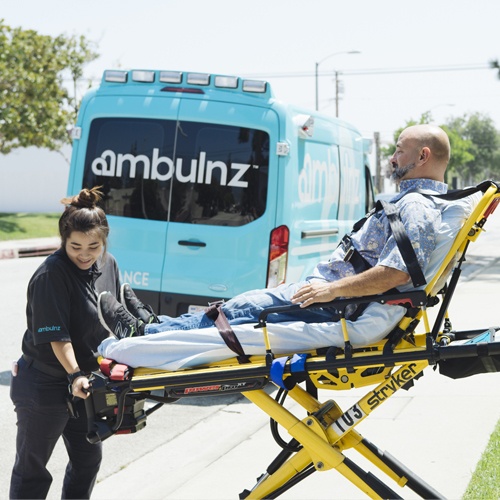By: Stan Vashovsky, Ambulnz CEO
In the previous blog post, I discussed how we medical transportation services providers must become better partners with caregivers. Today, I’d like to discuss why this is so important from the patient’s perspective.
I’d like to start with a simple concept: Every patient’s experience begins and ends with their ride.
This idea should be core to the way medical transportation operates today, but for many reasons this is simply not the case. Our industry is perceived by many as a peripheral service to the healthcare delivered by “actual caregivers.”
In a recent post on a popular EMT social media site, someone referred to ambulances as medical taxis, which is offensive since we all know we do much more than simply get patients from here to there.
As an industry, we MUST work together to change these perceptions. And this starts with first acknowledging that the experience patients have been receiving is sub-standard, with multiple studies pointing to late or missed rides, inattentive staff and aging rigs.
New technology, better training and upgraded equipment will certainly make a difference in addressing these issues, but I am aware that not all providers have the resources for these improvements.
So, let’s start by shifting our awareness and attitudes. First, it’s important that we as an industry accept the role we play in the overall health of the patients we serve.
"The American Medical Association says about 3.6 million patients miss appointments each year because of transportation problems, including one million children. Missed appointments are not only costly, but can be dangerous to the health of patients, especially those with chronic diseases."
Those chronically ill patients, by the way, often have the greatest transportation challenges. Delays in transportation – and therefore treatment – can exacerbate these patients’ conditions. This only drives up the cost of healthcare as it leads to additional health problems and additional medical care.
So, our industry has an impact on BOTH patient outcomes AND healthcare costs.
This situation is only going to become more challenging. We all know that we have an aging population with a higher percentage of patients with multiple chronic diseases. We are already seeing higher demand for our services due to the estimated 270,000 people eligible for non-emergency transportation as a result of the ACA and expansion of Medicaid benefits.
And with more medical care provided on an outpatient basis, trips to medical appointments have become the lifeblood of sustainable healthcare delivery. Efficient access to medical transportation for non-emergency care can alleviate costly trips to the emergency room later on.
With greater awareness of the impact our industry is having on patient care, we can all do more at an individual level to bring greater professionalism to the job.
Ambulance companies must build technology platforms that provide full transparency when it comes to scheduling and tracking our ambulances, but we know technology is just part of the equation. That transparency must also extend into our communication with caregivers and patients.
Clear communication among caregivers, dispatchers and EMTs is important when it comes to patient health and well-being. We must strive for clear and complete communication when arriving at a call, making sure the handover includes a full transfer of all vital information about the patient’s condition and medical needs. In fact, there is some evidence that poor communication contributes to medical errors and adverse impacts on patient outcomes.
Then there is the overall level of professionalism we bring to the job. In my conversations and personal experiences with patients, it has become clear that the single greatest factor impacting their experience in a medical facility or ambulance is the professionalism of the people providing the service.
"Our industry has far too many stories of EMTs and drivers with poor attitudes, who are inattentive, or worse, distracted from the job when caring for the patient or driving the rig."
Standards for professionalism simply need to be raised, with patient-centric training and a commitment to service quality that exceeds expectations at every turn.
The burden of professionalism is not just on the EMT, but must be shared with ambulance companies. Our industry must provide better compensation to employees, invest in continuing education and provide the necessary tools and support so EMTs are positioned to succeed and build fulfilling careers.
In addition, that professionalism must not only be felt, but seen. Modern rigs and clean uniforms might at first seem like cosmetic improvements, but research has shown that design has a tangible impact on the psyche. And when the customer is a patient dealing with a health issue, every aspect of the experience either adds to or detracts from their overall well-being.
Ultimately, we all need to focus on the patient experience – while simultaneously addressing the underlying and systematic challenges that have led our industry to its current state. This is the only way we will collectively improve the reputation of our industry.
It will take a lot of work and commitment, but if we keep the patient experience at the center of our mission, our industry will flourish and succeed.






